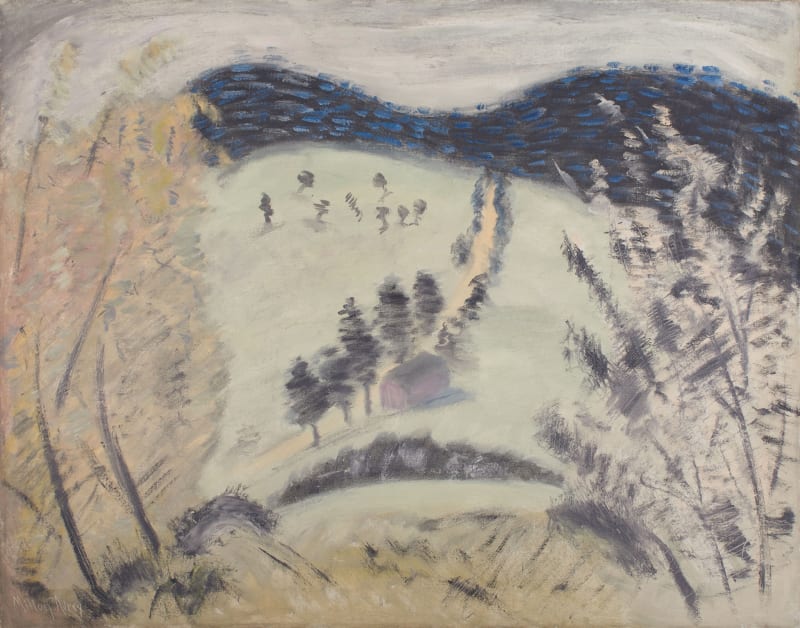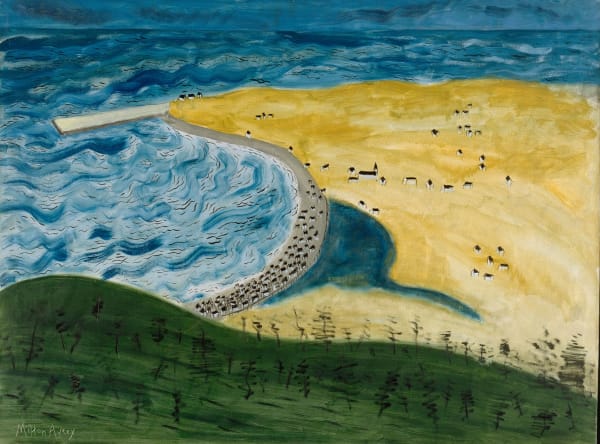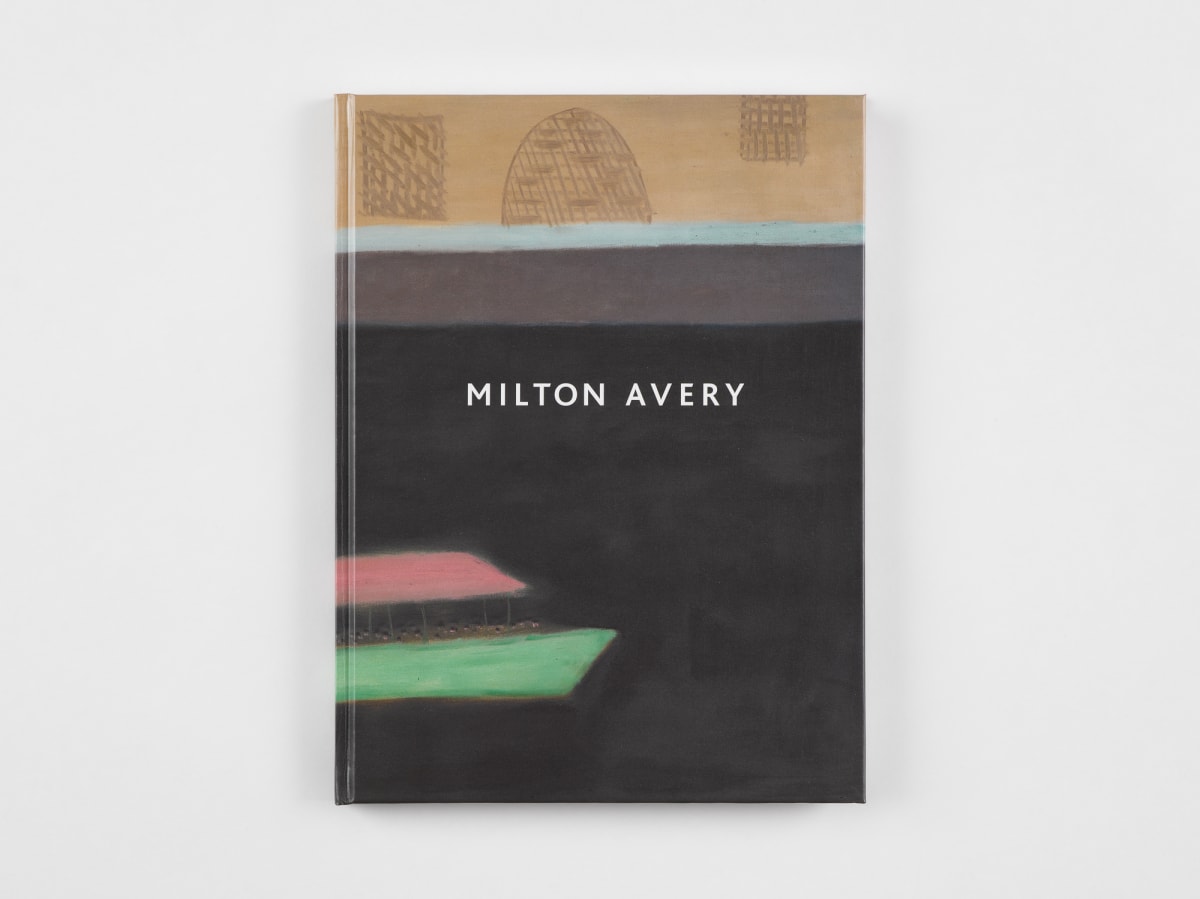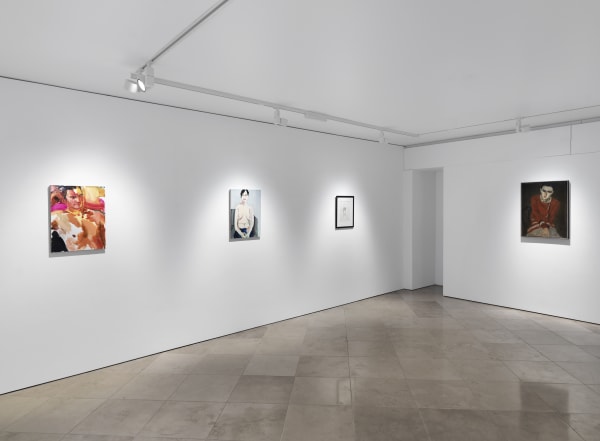Milton Avery
-
About
One of the most influential artists of the twentieth century, Milton Avery (1885–1965) is celebrated for his luminous paintings of landscapes, figures and still lifes, which balance distillation of form with free, vigorous brushwork and lyrical colour.
Avery pursued an independent and steadfast course throughout his career. Always drawing imagery from the world around him, in particular the landscapes and people he loved, his art is as intimate and accessible as it is towering in its ambition and achievement. With his focus on simplified forms and use of colour as a primary means of expression, in the 1930s he profoundly influenced and won the devotion of fellow artists including future abstract expressionists Mark Rothko, Adolph Gottlieb and Barnett Newman. Rothko in particular admired the ‘gripping lyricism’ of Avery’s work. However, while seeking to express an idea in its simplest form, Avery never sought pure abstraction for himself. Above all, he is an artist who resists categorisation. ‘I never have any rules to follow,’ he stated in 1952, ‘I follow myself.’
-
Biography
Born in Altmar, New York, in 1885, Milton Avery moved with his family to Hartford, Connecticut in 1905. After studying at the Connecticut League of Art Students, he worked a succession of night jobs in order to paint during the daytime.
Avery moved to New York in 1925 and in 1926 married Sally Michel, whose earnings as an illustrator enabled him to concentrate more fully on painting. His first exhibition in New York was in 1927, though it was not until 1935 that he had his first one-man exhibition, at the Valentine Gallery, New York.
In 1944 his first solo museum exhibition opened at the Phillips Memorial Gallery, Washington, DC. In 1952 he visited Europe for the first time, travelling to London, Paris and the French Riviera. A retrospective exhibition opened at the Whitney Museum of American Art, New York, in 1960; a second retrospective was held at the Whitney Museum of American Art in 1982. In 1962 Milton Avery: Painting 1930-1960 by Hilton Kramer, the first monograph on Avery, was published. Milton Avery died on 3 January 1965 in New York, aged 79.
Avery’s work is represented in museums and private collections worldwide, including: Albright-Knox Art Gallery, Buffalo, NY; Art Institute of Chicago, IL; Hirshhorn Museum and Sculpture Garden, Washington, DC; Los Angeles County Museum of Art, CA; Metropolitan Museum of Art, NY; Museum of Fine Arts, Boston, MA; Museum of Modern Art, NY; National Gallery of Art, Washington, DC; National Gallery of Australia, Canberra; Philadelphia Museum of Art, PA; The Phillips Collection, Washington, DC; San Francisco Museum of Modern Art, CA; Smithsonian American Art Museum, Washington, DC; Tate, London; Thyssen-Bornemisza Museum of Art, Madrid, Spain; Walker Art Center, Minneapolis, MN; Whitney Museum of American Art, NY; Yale University Art Gallery, New Haven, CT.
Organised by the Royal Academy of Arts, London, in collaboration with the Modern Art Museum of Fort Worth, Texas, and Wadsworth Atheneum Museum of Art, Hartford, Connecticut, a major retrospective of Avery’s work commenced at The Modern, Fort Worth, travelling to the Wadsworth Atheneum and the Royal Academy of Arts in 2022.
-
News
-

Colour Form and Composition: Milton Avery and his enduring influence on contemporary painting
September 18, 2025The exhibition (24 October 2025–4 April 2026) features over 20 paintings and watercolours by Avery alongside works by seven contemporary painters each responding to the artist's legacy.Read More -

Milton Avery: American Colourist at the Royal Academy of Arts
October 2, 2022Milton Avery is considered one of North America’s greatest 20th-century colourists. According to The New York Times , “Only Matisse – to whose art he...Read More -

Milton Avery: American Colourist reviewed by Time Out
July 20, 2022★★★★★ Art is serious. It’s meant to be experimental, avant-garde, intellectual, rigorous. But Milton Avery is something else: Milton Avery is joyful. Not that the...Read More -

The Financial Times reviews Milton Avery: American Colourist
July 18, 2022Space is airy and open, the cast list domestic and unheroic, a piercing sun or subdued lamplight in cosy interiors bathes everything in a warm...Read More -

Laura Cumming reviews Milton Avery: American Colourist
July 17, 2022★★★★★ There is a portrait by Milton Avery in this bewitching survey with the title Husband and Wife . It shows a couple who have...Read More -

The Art Newspaper features Milton Avery: American Colourist and talks to exhibition curator Edith Devaney
July 12, 2022“You always feel better after looking at a Milton Avery painting,” says Edith Devaney, the curator of the first comprehensive exhibition in Europe dedicated to...Read More -

Milton Avery: American Colourist reviewed by The Telegraph
July 12, 2022★★★★ 'It’s the first solo show of Avery’s work in a European public gallery, and it sweeps you through a half-century of flux: we move...Read More -

Laura Freeman reviews Milton Avery: American Colourist for The Times
July 12, 2022★★★★★ 'He was America’s first great modern colourist with a bracing, racing-silk palette.' “There have been others in our generation who have celebrated the world...Read More -

The Guardian reviews Milton Avery: American Colourist at the Royal Academy of Arts
July 12, 2022★★★★★ 'To see this art so closely related to abstract expressionism yet rooted in nature opens a new vista on American art itself. Avery is...Read More -

‘Rothko’s guru: how Milton Avery transformed modern art’ – The Telegraph previews Milton Avery: American Colourist at the Royal Academy of Arts
July 6, 2022The story of how Milton Avery came to shape modern American art is really a love story. It begins in 1925, when, on a painting...Read More -

Milton Avery featured in The Observer’s best summer culture guide
May 30, 2022'Gentle, unassuming, with his outstanding gift for colour and his simplified grace, Milton Avery (1885-1965) is a singular master of American art.' – Laura Cumming...Read More -

The New Yorks Times reviews the work of Milton Avery
May 12, 2022Roberta Smith takes a look at the work of Milton Avery, which is currently on view in Hartford and New York . 'He remained a...Read More -

Sebastian Smee reviews Milton Avery at the Wadsworth Atheneum Museum of Art in the Washington Post
March 16, 2022Milton Avery was the 20th century’s great ‘painter’s painter’ America’s most original colorist, the subject of new retrospective at the Wadsworth Atheneum, was inspired by...Read More -

Artforum reviews Milton Avery at The Modern, Fort Worth
December 13, 2021'The people, places, and things on display in the Milton Avery survey here are free of pomp and circumstance. Viewed in today’s divisive times, Avery’s...Read More -

Milton Avery at The Modern, Fort Worth is reviewed by WSJ
December 8, 2021'A Luminary Outside the Mainstream... The painter's first retrospective since 1982 reveals the genius in his formal economy and use of color,' writes Alexandra Peers...Read More -

Milton Avery at The Modern, Fort Worth
November 7, 2021Milton Avery is considered one of North America’s greatest 20th-century colorists. His career fell between the movements of the American Impressionists and the Abstract Expressionists,...Read More -

The Royal Academy of Arts announces its 2022 programme, featuring the major exhibition Milton Avery: American Colourist
September 1, 2021The first comprehensive survey of Avery’s work in Europe, the exhibition (which will now take place 16 July–16 October 2022) brings together a selection of...Read More -

The Wall Street Journal reviews Milton Avery: The Connecticut Years at the Wadsworth Atheneum
June 12, 2021An exhibition at the Wadsworth Atheneum provides a glimpse into the evolution of the 20th-century American modernist’s signature style. By Peter Plagens Just as prequels...Read More -

Milton Avery: The Connecticut Years at the Wadsworth Atheneum
May 14, 2021The exhibition (14 May–17 October 2021) presents an intimate look at the formative years of the modernist master. Beginning in Hartford in the 1910s and...Read More -

The Financial Times reviews Milton Avery: The Late Portraits
August 15, 2019 Read More -

Elephant writes about Milton Avery: The Late Portraits
August 2, 2019The American artist’s late paintings of intimate domestic scenes presciently reflect our current zeitgeist, at a time when detailed visual documentation of ordinary life has...Read More -

Summer with the Averys (Milton, Sally, March) at Bruce Museum, Greenwich, Connecticut
May 11, 2019Featuring landscapes, seascapes, beach scenes, and figural compositions – as well as rarely seen travel sketchbooks – the exhibition (11 May–1 September 2019) takes an...Read More -

Milton Avery at Victoria Miro Mayfair reviewed in Apollo
June 23, 2017Milton Avery’s unique American modernism. By Matthew Sperling ‘Why talk when you can paint?’, Milton Avery (1885–1965) would say when asked to make statements about...Read More -

Victoria Miro presents a solo booth of works by Milton Avery at Art Basel 2017
June 15, 201715 - 18 Jun 2017 Victoria Miro is delighted to present a stand (R7) dedicated to the twentieth century master Milton Avery (1885 – 1965)....Read More -

Artnet features Milton Avery’s Boathouse by the Sea in its Ten Best Artworks at Art Basel 2017
June 14, 2017Milton Avery Boathouse by the Sea (1959) Victoria Miro – London By Andrew Goldstein A great American painter of soft landscapes and subtle mood, Milton...Read More -

Victoria Miro’s solo presentation of Milton Avery named one of Artsy’s 20 best booths at Art Basel 2017
June 14, 2017Booth R7 Victoria Miro With works by Milton Avery A series of paintings and works on paper by influential American master Milton Avery mark Victoria...Read More -

Gallery Event: Milton Avery exhibition tour led by Edith Devaney
June 4, 2017Monday 10 July, 6-7pm Edith Devaney, Contemporary Curator at the Royal Academy of Arts, London, and author of the catalogue essay for our current Milton...Read More -

Laura Cumming reviews Milton Avery in The Observer
June 4, 2017Effulgent in their gorgeous, low-toned palette of greys, mauves, greens and a whole range of pinks that are Avery’s trademark, these late paintings appear modest...Read More -

Culture Whisper previews Milton Avery
June 3, 2017The work of American Modernist Milton Avery will grace the walls of Victoria Miro in his first UK exhibition for more than 10 years A...Read More -

Artforum reports on Victoria Miro's representation of the Milton Avery Estate
March 1, 2017London-based gallery Victoria Miro has announced that it will be representing the estate of American painter Milton Avery, Melanie Gerlis of the Financial Times reports....Read More -

Victoria Miro's representation of the Milton Avery Estate reported in the Financial Times
February 25, 2017Miro takes on Avery estate. By Melanie Gerlis Never a dull moment in the field of artists’ estates right now: Victoria Miro is the latest...Read More
-
-
Books
-
Gallery Exhibitions
-

Unmasked
12 Feb – 27 Mar 2022 VeniceAn exhibition in Venice of works by Milton Avery, Jules de Balincourt, Hernan Bas, María Berrío, Chantal Joffe, Doron Langberg, Alice Neel and Celia Paul.Learn More -

The Sky was Blue the Sea was Blue and the Boy was Blue
24 Feb – 30 Apr 2021 Miro PresentsAn exhibition of work by 19 artists celebrating the colour blue, available online and on Vortic as part of The London Collective.Learn More -

Milton Avery: The Late Portraits
20 Jul – 8 Sep 2019 VeniceVictoria Miro presents an exhibition of portraits drawn from the last four years of Milton Avery’s life. Characterised by economy of touch and luminescence of colour, the works on view...Learn More -

Milton Avery
7 Jun – 29 Jul 2017 Victoria Miro MayfairVictoria Miro’s first exhibition by the twentieth century master Milton Avery (1885 – 1965) since announcing the gallery’s representation of his work in Europe, and also the first exhibition of...Learn More
-
-
Contact Form
Contact us regarding available works by Milton Avery





































